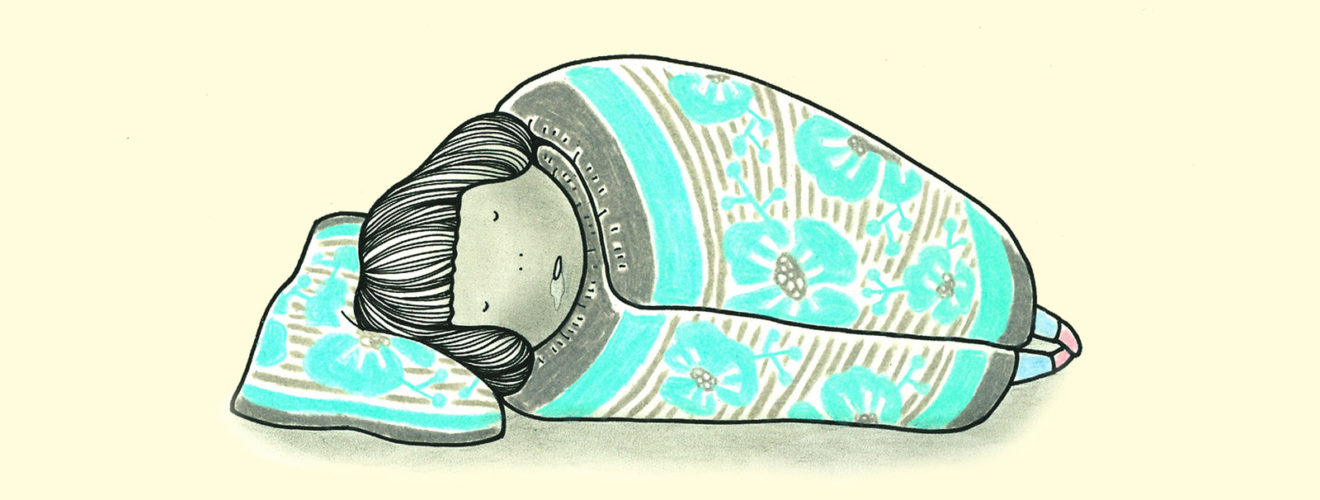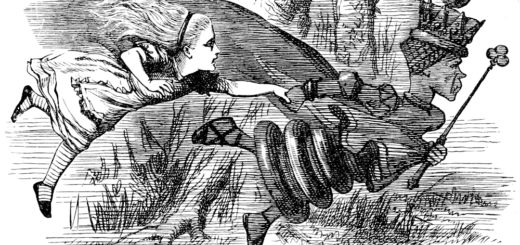Sleep pressure; is this why we crash?
Do you sometimes feel like the energy has suddenly been drained from you and the only thing you want to do is sleep? Or you wake up and still feel as though the 11 hours spent sleeping did nothing to make you less exhausted? When talking about sleep patterns and difficulties, we often only cover our internal body clock — the circadian rhythm. However, our sleep and wakefulness cycles are controlled by another important process called sleep pressure. Together, sleep pressure and circadian rhythm influence when we fall asleep and wake up, and how we feel when we are awake.
What is sleep pressure?
Sleep pressure (or homeostatic sleep drive) can be defined as the “need to sleep”. It is a biochemical system that urges us to sleep based on the amount of time we have been awake and the intensity of brain activity during the day. Sleep pressure gradually builds throughout the day, making us feel drowsy. When we awaken after a good night’s sleep, we have low sleep pressure and no strong need to sleep. As the day goes on, sleep pressure accumulates until it is high enough that we fall asleep. After another night of sleeping, this sleep pressure resets for a new day.
Usually, most of us stay awake for the greater part of the day and have one consolidated sleeping phase. However, if sleep pressure was the only mechanism controlling our sleep schedule, we would be prone to napping throughout the day — staying awake for a couple of hours, then dozing off to decrease sleep pressure, before repeating the cycle all over again. Also, we are usually as alert at 1 pm as we are at 6 pm, even though our sleep pressure gradually increases throughout the day. This shows that sleep pressure doesn’t work alone in controlling our sleep schedule; it operates together with the circadian rhythm. The circadian rhythm is our internal biological cycle that rises and falls over 24 hours. Usually, this clock promotes wakefulness in the morning hours and sleepiness closer to our bedtime, thus determining the best time to sleep.
Building up the “need to sleep”
In the late 20th century, researchers found that adenosine, an essential chemical in our bodies, can decrease wakefulness and increase sleep drive, specifically triggering the deeper stages of sleep 1.
So, sleep pressure arises from the accumulation of adenosine in the brain.
During wakefulness, our brain uses up a lot of energy in the form of adenosine triphosphate (ATP), which is our main energy currency and stored in the brain as glycogen. ATP is released from neurons, or nerve cells, in the brain and is then degraded to form adenosine in the extra-synaptic space. High neuronal activity leads to substantial neurotransmitter release and sequential ATP release from the glycogen stores, which results in more adenosine being created. Adenosine then acts in the basal forebrain, which is crucial in the sleep and wake cycles. Adenosine binds to one of four adenosine receptors; although, evidence suggests that only two receptors — A1 and A2A — play a major role in sleep regulation 2. A1 receptors dampen the activity of neurons responsible for wakefulness at various sites in the brain, but specifically in the basal forebrain. A2A receptors are more localised, and in the preoptic area of the hypothalamus, they excite the neurons that encourage sleep. Through the simultaneous inhibitory and excitatory effects of A1 and A2A receptors, respectively, adenosine promotes sleep.
To demonstrate that adenosine affects the sleep and wake cycles, some researchers injected adenosine into the brains of various animals. These injections were associated with modified neuronal activity and changes in the animal’s sleep behaviour.3
In other studies, depriving animals of sleep led to a plateau in basal forebrain adenosine levels, yet adenosine continued to rise in other brain regions, thus increasing the need for sleep in the wake hours.
Reversing the process
So, if adenosine builds up during the day to promote sleep, how do we wake up? Besides the innate body clock bringing us up from our slumber, we also create molecules of ATP from adenosine during sleep, which decreases sleep pressure. This process is the reverse of what occurs when we are awake. Sleep pressure is mostly related to deep sleep occurring early in the night. Because deep sleep requires less brain activity, it is hypothesised that the replenishment of glycogen, and therefore ATP, happens during this stage4.
The formation of ATP from adenosine can also explain sleep inertia — the grogginess we can feel after waking up. This grogginess can mainly be ascribed to our body not being able to transform all of the adenosine produced during wake hours into ATP, thus leaving a surplus of adenosine, even after a full night of sleep.
So, what makes us ‘crash’?
Have you ever seen someone bounce around one second, then nod off in the next moment? This may be due to the cup of coffee (or two) they had a few hours earlier. Many of us rely on caffeinated beverages like coffee, tea, soda, and energy drinks to get us through the day. We use caffeinated products like chocolate to cheer ourselves up and over-the-counter medicines to get rid of headaches. So, it comes as no surprise that caffeine is the most used psychoactive compound (a substance able to alter our mental processes) in the world. Caffeine is an adenosine antagonist — it binds to the A1 and A2A receptors in the brain as adenosine does. By doing so, it blocks adenosine and prevents drowsiness.5
However, adenosine is still being produced even though it cannot bind to its receptors. So, once the caffeine is metabolised and its effects wear off, all the built-up adenosine starts binding to adenosine receptors. This flood of adenosine causes a sudden change in neuronal activity, resulting in a caffeine crash. For those who consume coffee, the symptoms of a caffeine crash — irritability, dozing off, and extreme drowsiness — are familiar. This is simply the body being told to go to sleep more intensely than usual.
When a high amount of adenosine accumulates in the body, the excess cannot be converted into ATP during sleep. This results in the sleep inertia mentioned earlier and encourages us to indulge in more caffeinated drinks. Ultimately, this endless cycle leads to poorer sleep, reliance on caffeine, and energy crashes.
As an endnote, understanding what sleep pressure is can help make healthier lifestyle choices. Grabbing several cups of coffee or cans of energy drink a day might give you a short energy boost, but it comes at a price. The impossible drive to sleep after the caffeine wears off only pushes us to mask sleep pressure with yet another caffeine source. Many of us are stuck in this vicious cycle of relying on anything but the only true way of reducing sleep pressure — sleep.
This article was specialist edited by Adriana Sanchez and copy-edited by Lauren Taylor












12 Responses
[…] caused by the build-up of chemicals (called adenosines) in the brain. These are proteins that are removed from our brains while we sleep, and build up again while we are […]
[…] caused by the build-up of chemicals (called adenosines) in the brain. These are proteins that are removed from our brains while we sleep, and build up again while we are […]
[…] caused by the build-up of chemicals (called adenosines) in the brain. These are proteins that are removed from our brains while we sleep, and build up again while we are […]
[…] caused by the build-up of chemicals (called adenosines) in the brain. These are proteins that are removed from our brains while we sleep, and build up again while we are […]
[…] caused by the build-up of chemicals (called adenosines) in the brain. These are proteins that are removed from our brains while we sleep, and build up again while we are […]
[…] caused by the build-up of chemicals (called adenosines) in the brain. These are proteins that are removed from our brains while we sleep, and build up again while we are […]
[…] caused by the build-up of chemicals (called adenosines) in the brain. These are proteins that are removed from our brains while we sleep, and build up again while we are […]
[…] caused by the build-up of chemicals (called adenosines) in the brain. These are proteins that are removed from our brains while we sleep, and build up again while we are […]
[…] caused by the build-up of chemicals (called adenosines) in the brain. These are proteins that are removed from our brains while we sleep, and build up again while we are […]
[…] (تسمى الأدينوزين) في الدماغ. هذه هي البروتينات إزالتها من أدمغتنا بينما ننام ، ونبني من جديد ونحن […]
[…] caused by the build-up of chemicals (called adenosines) in the brain. These are proteins that are removed from our brains while we sleep, and build up again while we are awake. For adults, this process takes about 14-16 […]
[…] er forårsaget af opbygningen af kemikalier (kaldet adenosiner) i hjernen. Det er proteiner, der fjernes fra vores hjerner, mens vi sover, og opbygges igen, mens vi er […]